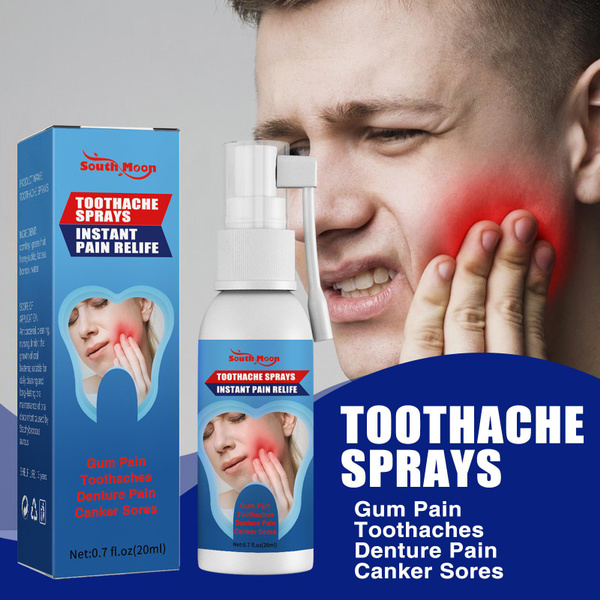Toothache Relief Found

The agony of a toothache can be debilitating, affecting every aspect of daily life. It’s a pain that’s hard to ignore, a constant reminder that something is amiss in the delicate balance of our oral health. For centuries, humans have sought out various remedies to alleviate this discomfort, ranging from homemade concoctions to professional dental interventions. In the quest for toothache relief, it’s essential to understand the underlying causes and explore the array of solutions available, from natural remedies to advanced dental procedures.
Understanding Toothaches
Before diving into the relief options, it’s crucial to grasp what causes a toothache. Essentially, a toothache occurs when the pulp of the tooth, which contains nerves and blood vessels, becomes inflamed or irritated. This inflammation can result from various factors, including tooth decay, gum disease, a cracked tooth, or even an abscess. Each of these conditions leads to the pulp’s nerve endings becoming sensitive, causing the characteristic sharp, stabbing pain or dull ache associated with toothaches.
Natural Remedies for Immediate Relief
For many, the first line of defense against a toothache involves natural remedies that can provide immediate relief. These methods are often preferred for their accessibility and non-invasive nature:
- Cold Compress: Applying a cold compress to the cheek near the aching tooth can help reduce pain and swelling by constricting blood vessels.
- Salt Water Rinse: Rinsing with warm salt water several times a day can help reduce swelling and kill bacteria.
- Clove Oil: Known for its analgesic and anti-inflammatory properties, clove oil can be applied to the affected tooth using a cotton swab.
- Garlic: Due to its antibacterial properties, garlic can help combat infection. It can be crushed and mixed with salt to create a paste applied to the tooth.
Professional Dental Solutions
While natural remedies can offer temporary relief, they are no substitute for professional dental care. A dentist can diagnose the root cause of the toothache and provide appropriate treatment:
- Fillings: For cavities, fillings are used to fill the hole and prevent further decay.
- Root Canal: If the pulp is damaged, a root canal may be necessary to remove the infected pulp and save the tooth.
- Extraction: In severe cases where the tooth is beyond repair, extraction may be the only option.
- Crowns: A crown can protect a cracked tooth and prevent further irritation.
Preventive Measures
The best approach to dealing with toothaches is prevention. Regular dental check-ups, good oral hygiene practices such as brushing and flossing, and a diet low in sugars can significantly reduce the risk of tooth decay and gum disease. Additionally, avoiding crunching on hard foods or using teeth as tools can prevent cracks and chips that could lead to a toothache.
The Role of Diet
Diet plays a crucial role in oral health. Foods high in sugar and acids can contribute to tooth decay, while a diet rich in minerals like calcium and vitamins can strengthen teeth and gums. Avoiding extremely hot or cold foods and drinks can also prevent discomfort in teeth that are sensitive due to receding gums or tooth decay.
Emerging Trends in Toothache Relief
Advancements in dental care are continually evolving, with new technologies and treatments being developed to address toothaches more effectively. Laser treatments for cavity removal and advanced materials for fillings are examples of how dental care is becoming more precise and less invasive.
Conclusion
Toothache relief is not a one-size-fits-all solution. What works for one person may not work for another, emphasizing the importance of professional dental care in diagnosing and treating the root cause of the pain. By understanding the causes of toothaches, exploring natural remedies for immediate relief, and embracing preventive measures, individuals can better navigate the path to a healthier, pain-free smile. Whether through traditional dental procedures or emerging trends in oral care, the quest for toothache relief continues, driven by the relentless pursuit of comfort and well-being.
What are the most common causes of a toothache?
+The most common causes include tooth decay, gum disease, a cracked tooth, and an abscess. Each of these conditions can lead to the inflammation of the tooth pulp, resulting in pain.
Can natural remedies cure a toothache?
+Natural remedies can provide temporary relief and help manage the pain but are not a substitute for professional dental care. A dentist can diagnose the underlying cause and provide the necessary treatment for a lasting solution.
How can I prevent toothaches?
+Prevention involves regular dental check-ups, practicing good oral hygiene such as brushing and flossing daily, and maintaining a diet low in sugars. Avoiding habits that can damage teeth, like using them to open packages, is also advisable.
What are the signs that I need to see a dentist for my toothache?
+Signs that you need to see a dentist include persistent pain, sensitivity to hot or cold foods and drinks, swelling around the tooth, or a fever. These could indicate a more serious issue like an abscess or severe decay that requires immediate professional attention.
Can a toothache be a sign of another health issue?
+Yes, in some cases, a toothache can be a symptom of another health issue. For example, sinus infections can cause tooth pain, and conditions like diabetes can increase the risk of dental problems. It’s essential to consult with a healthcare provider if you suspect your toothache might be related to another health concern.
